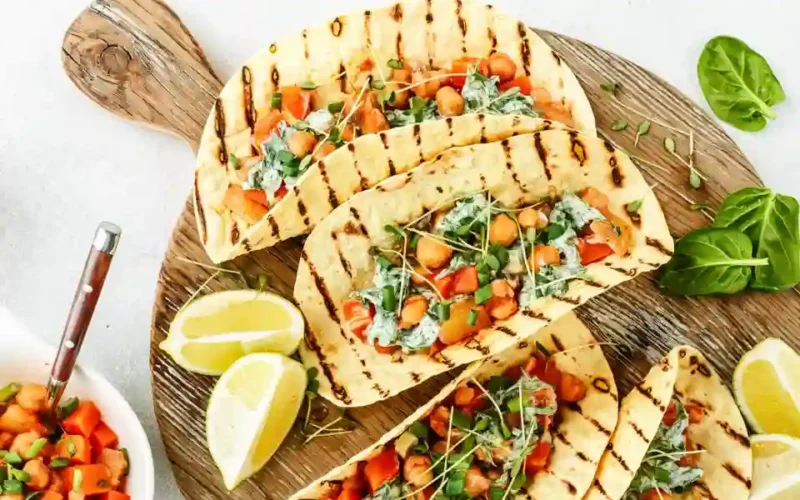Digestive health is a cornerstone of overall wellness, and the food we eat plays a significant role in maintaining it. Two key nutrients essential for a healthy digestive system are folate and fiber. Folate, a B-vitamin, is vital for cell growth and metabolism, while fiber aids in digestion, prevents constipation, and supports a healthy gut microbiome. This article provides a comprehensive guide to preparing delicious, folate, and fiber-rich dinners that promote digestive health.
Understanding Folate and Fiber
Folate, also known as vitamin B9, is crucial for DNA synthesis and repair. It’s particularly important during periods of rapid growth, such as pregnancy and infancy. Natural sources of folate include green leafy vegetables, legumes, nuts, and seeds.
Fiber, on the other hand, comes in two forms: soluble and insoluble. Soluble fiber dissolves in water to form a gel-like substance, helping to lower blood cholesterol and glucose levels. Insoluble fiber does not dissolve, aiding in the movement of material through the digestive system and increasing stool bulk. Good sources include fruits, vegetables, whole grains, and legumes.
Daily Folate and Fiber Requirements
The recommended dietary allowance (RDA) for folate is 400 micrograms (mcg) for adults, while pregnant women require 600 mcg. The recommended daily intake of fiber for adults is 25 grams (g) for women and 38 g for men.
Folate and Fiber-Rich Dinner Ideas
1. Lentil and Spinach Stew
- Lentils are a fantastic source of both folate and fiber. Cook them with spinach, onions, and garlic for a nutrient-packed stew.
- Add diced tomatoes and a splash of lemon juice for flavor and extra vitamin C, which can help with iron absorption from the lentils.
- Serve with a slice of whole-grain bread to increase your fiber intake.
2. Quinoa and Black Bean Salad
- Quinoa is not only high in protein but also in folate. Combine cooked quinoa with black beans, corn, avocado, and bell peppers for a fiber-rich salad.
- Dress with lime juice and olive oil, and add cilantro for a fresh taste.
- This dish can be served warm or cold, making it a versatile option for any season.
3. Broccoli and Chickpea Stir-Fry
- Broccoli is an excellent source of folate, while chickpeas provide both folate and fiber. Stir-fry these with ginger, garlic, and soy sauce for a quick and healthy meal.
- Serve over brown rice or whole-grain noodles to add even more fiber to your dinner.
- Top with sesame seeds for a crunchy texture and a boost of calcium.
4. Whole Wheat Pasta with Tomato and Basil Sauce
- Whole wheat pasta is higher in fiber than regular pasta. Pair it with a homemade tomato and basil sauce for a classic, comforting meal.
- Add a side of steamed asparagus or Brussels sprouts, both of which are folate-rich vegetables, to enhance the nutrient content.
- Consider incorporating ground turkey or lean ground beef into the sauce for added protein and iron.
5. Baked Salmon with a Side of Mixed Greens
- Salmon is not only rich in omega-3 fatty acids but also contains some folate. Bake it with lemon and dill for a flavorful dish.
- Serve alongside a salad of mixed greens including spinach and arugula, both excellent sources of folate.
- Add a variety of vegetables such as carrots, cucumbers, and tomatoes to the salad, and toss with a vinaigrette made from olive oil and lemon juice to increase fiber content.
6. Vegetarian Chili
- A combination of kidney beans, black beans, and pinto beans will provide a hearty dose of both fiber and folate.
- Include bell peppers, onions, and canned tomatoes to add flavor and additional nutrients.
- Serve with a small portion of brown rice or a slice of whole-grain bread to complement the meal.
7. Stuffed Bell Peppers
- Fill bell peppers with a mixture of quinoa, lentils, and finely chopped vegetables such as carrots and zucchini.
- Top with a sprinkle of grated cheese before baking. The cheese adds a delicious flavor and provides additional protein.
- Serve with a side of sautéed leafy greens like kale or collard greens for an extra folate boost.
8. Roasted Vegetable and Barley Bowl
- Roast a medley of vegetables such as sweet potatoes, carrots, and Brussels sprouts. These vegetables are high in fiber and other nutrients.
- Serve over cooked barley, a whole grain that’s a good source of fiber.
- Drizzle with a tahini-lemon dressing for a delicious and satisfying meal.
9. Avocado and Egg on Whole Grain Toast
- Avocado is a great source of fiber, and eggs provide some folate.
- Serve a poached or scrambled egg on a slice of whole-grain toast, topped with sliced avocado for a simple yet nutritious dinner.
- Sprinkle with a pinch of salt, pepper, and chili flakes for added flavor.
10. Sweet Potato and Black Bean Burritos
- Sweet potatoes are high in fiber, and black beans are an excellent source of both fiber and folate.
- Wrap cooked sweet potatoes and black beans in a whole wheat tortilla with lettuce, cheese, and salsa.
- Add a squeeze of lime for a zesty flavor and garnish with fresh cilantro.
Maximizing the Benefits of Folate and Fiber
To get the most out of these nutrients, consider the following tips:
- Variety is Key: Incorporate a wide range of folate and fiber-rich foods into your diet to ensure you’re getting a balance of nutrients.
- Cooking Methods Matter: Overcooking can destroy folate. Opt for steaming or sautéing instead of boiling to preserve this nutrient.
- Increase Fiber Gradually: Boosting fiber intake too quickly can lead to discomfort. Increase gradually and drink plenty of water.
- Balance with Other Nutrients: Pair folate and fiber-rich meals with sources of vitamin C and healthy fats for optimal absorption and nutrition.
Conclusion
Creating meals rich in folate and fiber is an excellent strategy for supporting digestive health. Not only do these nutrients aid in digestion, but they also play a role in preventing chronic diseases and improving overall well-being. The dinner ideas provided here are not just healthy; they are designed to be delicious and satisfying. Incorporating these meals into your weekly routine can lead to noticeable improvements in your digestive health and contribute to long-term wellness.
Remember, dietary changes should be complemented with other healthy lifestyle practices such as regular exercise, adequate hydration, and stress management. If you have specific health concerns or dietary needs, consulting with a healthcare professional or a registered dietitian can provide personalized guidance. By focusing on nutrient-rich foods like those high in folate and fiber, you’ll be taking a big step towards a healthier, happier digestive system.







